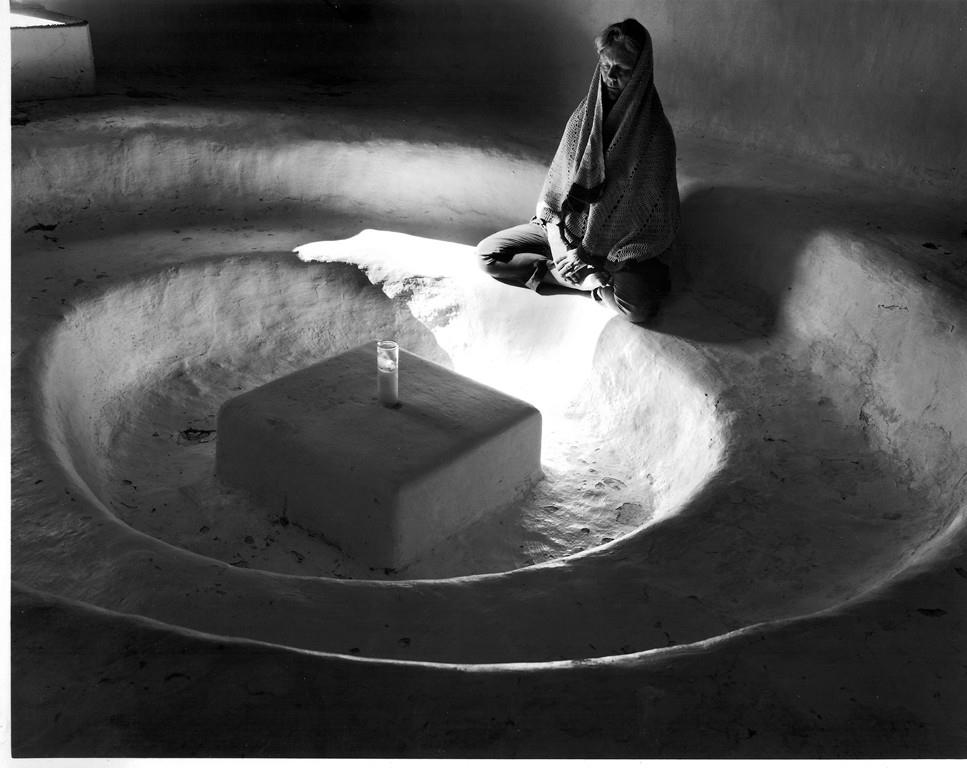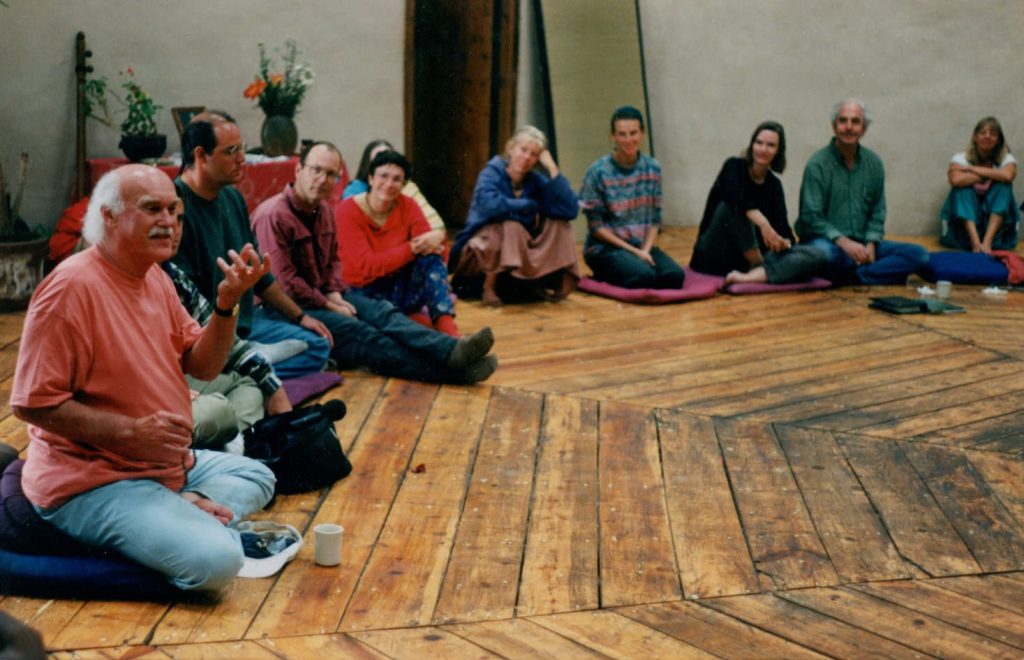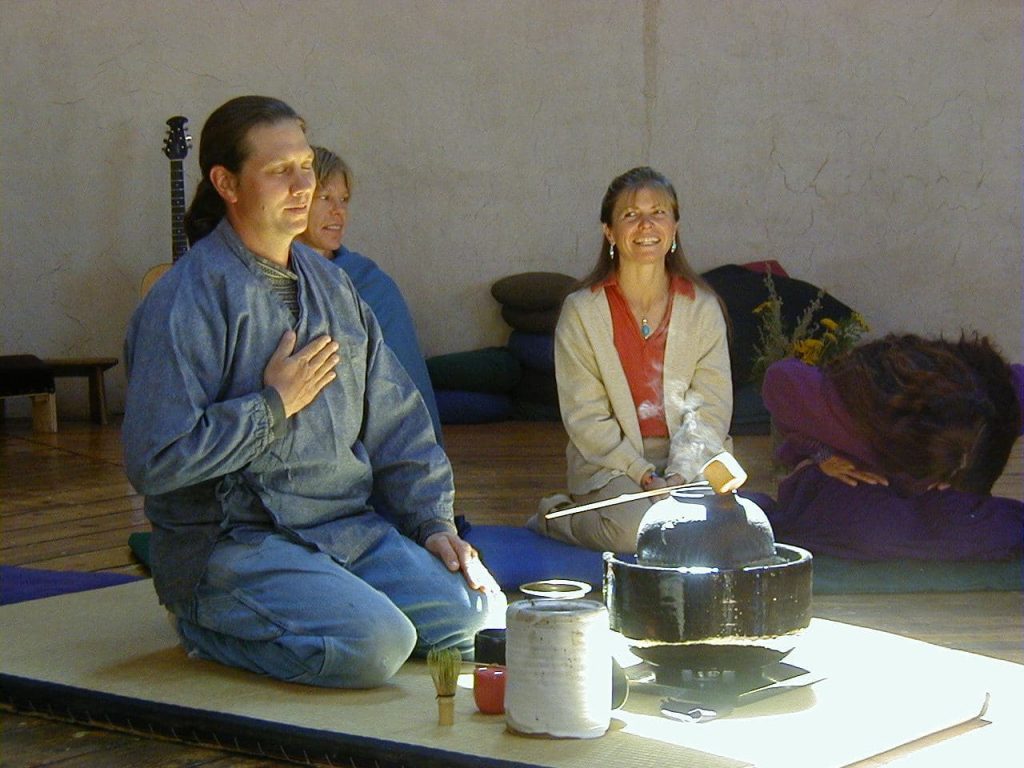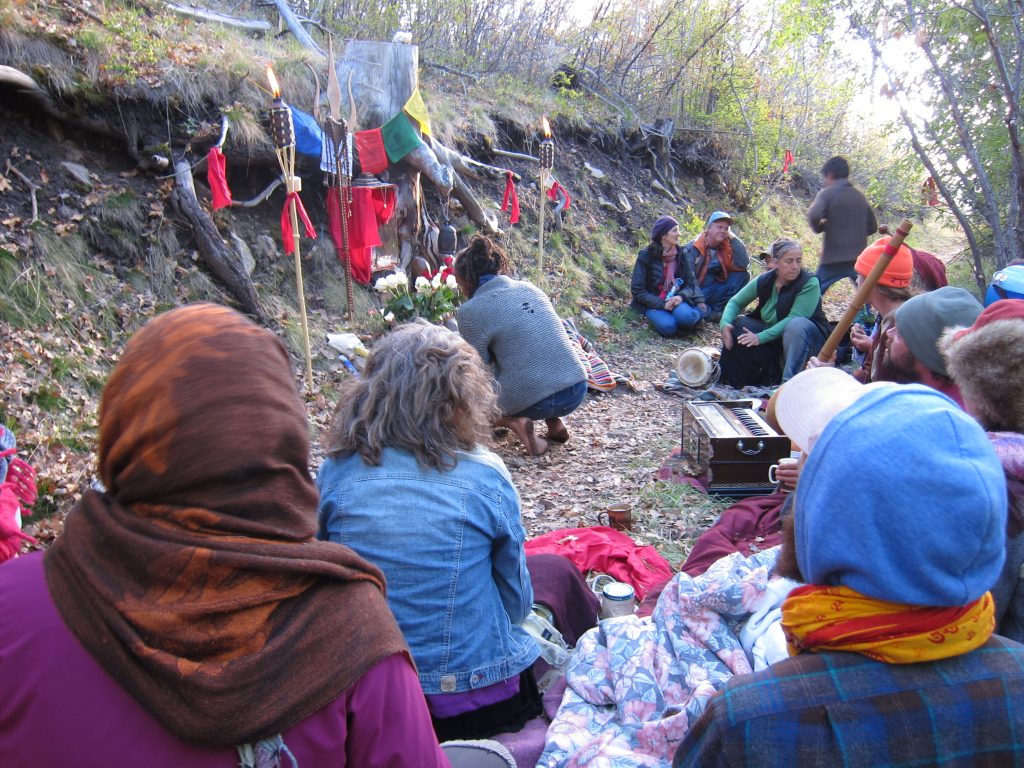Core Practices
Meditation
Meditation is held every day, generally for thirty minutes, though in the winter the time is usually increased. There is no structure to this time, except for observing silence. Some practice Buddhist meditation techniques, others use the time for silent mantras, and some just enjoy the quiet space. It is a way to develop self-awareness and to begin the day softly.
Practice and Tuning
After morning meditation, we gather for a short practice which can vary from chanting to dancing to … the possibilities are endless. After the practice, we sit in a circle and give a brief check-in about our emotional and mental state that day. Following that, we discuss practical matters that involve the community.
Heart Club
Heart Club is held on Wednesday evenings after dinner. Everyone who has been on the land for more than a week is invited. During this time we open our hearts and ears to each other. It is, amongst other things, a deep practice of listening. As the talking stick passes around the circle, we are given the opportunity to drop our own stories and sink into the spirit of compassion for the speaker, and community. Speakers are invited to share their struggles, joys, and whatever is in their hearts. There is no time limit. The ability to speak and share, coupled with the opportunity to listen and sympathize, is part of the backbone of communication that promotes community and trust at Lama. On occasion, it creates the most subtle, beautiful moment – that rare and special blossoming of the heart.
Zikr
Zikr is held most Thursday evenings. The Sufi practice of remembrance, it is a group practice involving chant and movement, bringing our awareness to the source of all life.
Shabbat
Shabbat is held every Friday evening. It is often how people first discover Lama.
Rabbi Zalman Schachter first introduced the practice of Shabbat in 1970. Since then, family and friends have gathered at Lama Foundation on Friday night to take food, converse, and welcome in the Shekina, the presence of God. Sometimes traditional, sometimes delightfully casual, every evening is different, but the candles are always lit, the wine is blessed, and the challah is shared among those gathered.
Men’s and Women’s Groups
On occasion, just the men or women at Lama come together to share a circle of common understanding. Often similar to heart club, the format can vary, including hikes, evening bonfires or whatever those present find valuable.
Music and Dance
Drum Circles and other creative events happen regularly in the summer, often after Shabbat or whenever the mood strikes. With plenty of drums, guitars, and other instruments to play, this is an opportunity for musicians both practiced and new to come together and make music and fun – and dance!
Other Activities
Countless other events and ceremonies take place at Lama, but these are the core practices that occur weekly, or nearly weekly. The summer is rife with special opportunities like the sharing of kirtan, Dances of Universal Peace, sweat lodges, trips to the Hanuman Temple in Taos, group outings, visits by various teachers or communities, herb walks, participation in retreat offerings, and much more.
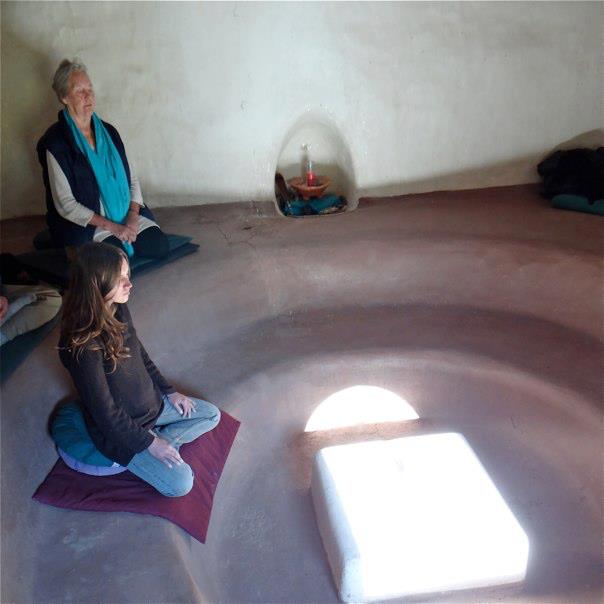
Meditating in the Prayer Room
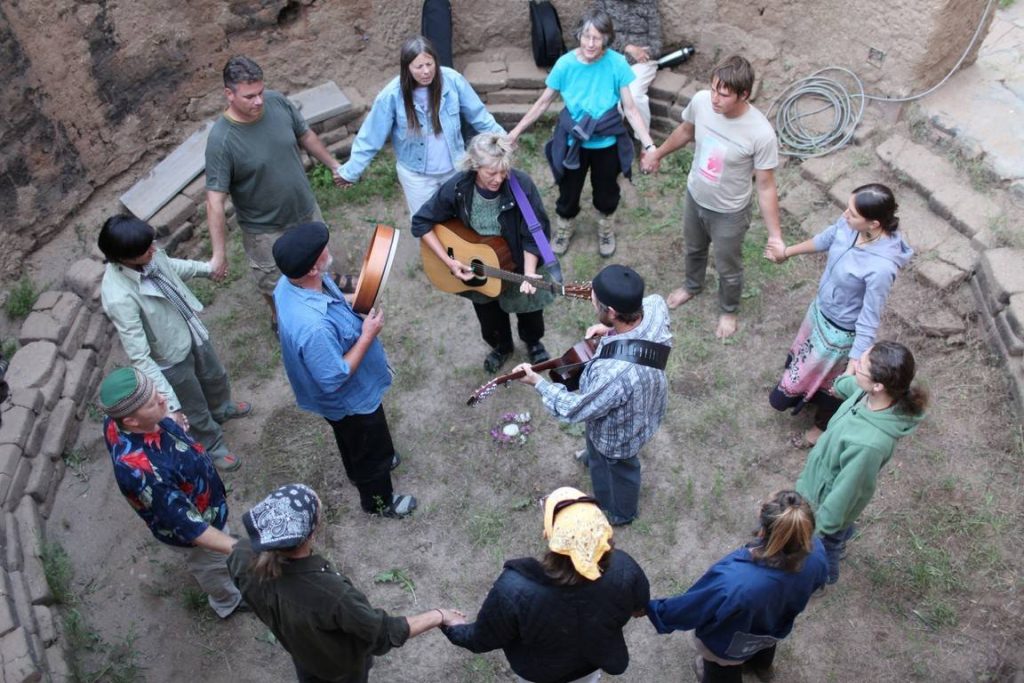
Zikr at Lama
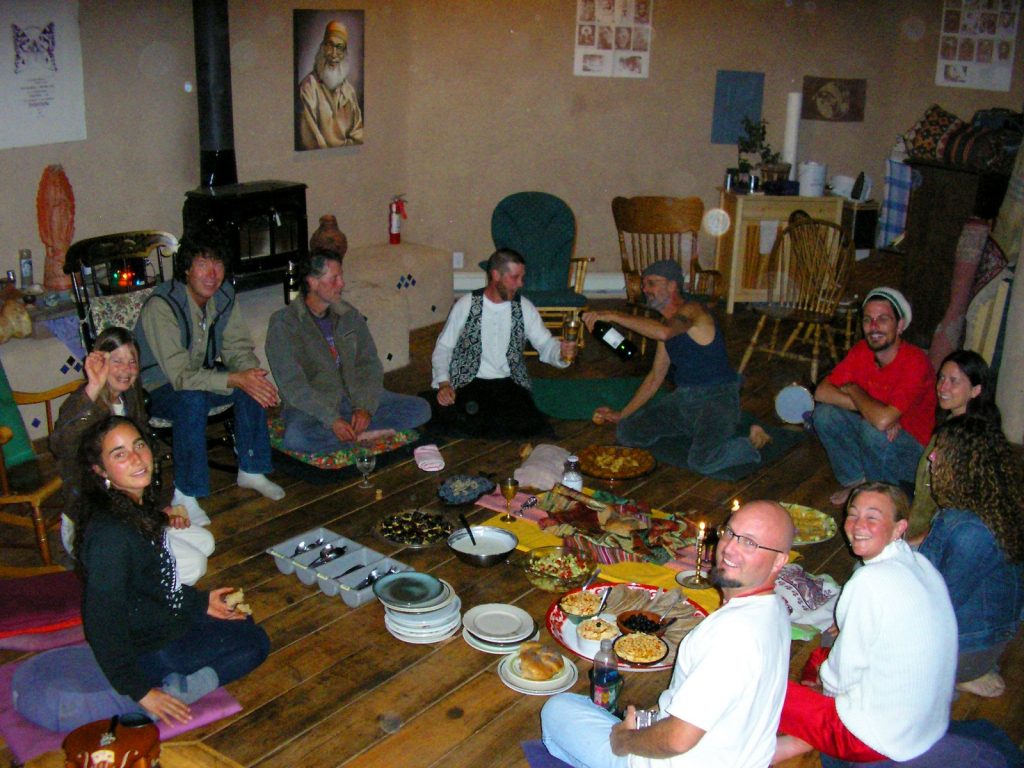
Shabbat at Lama
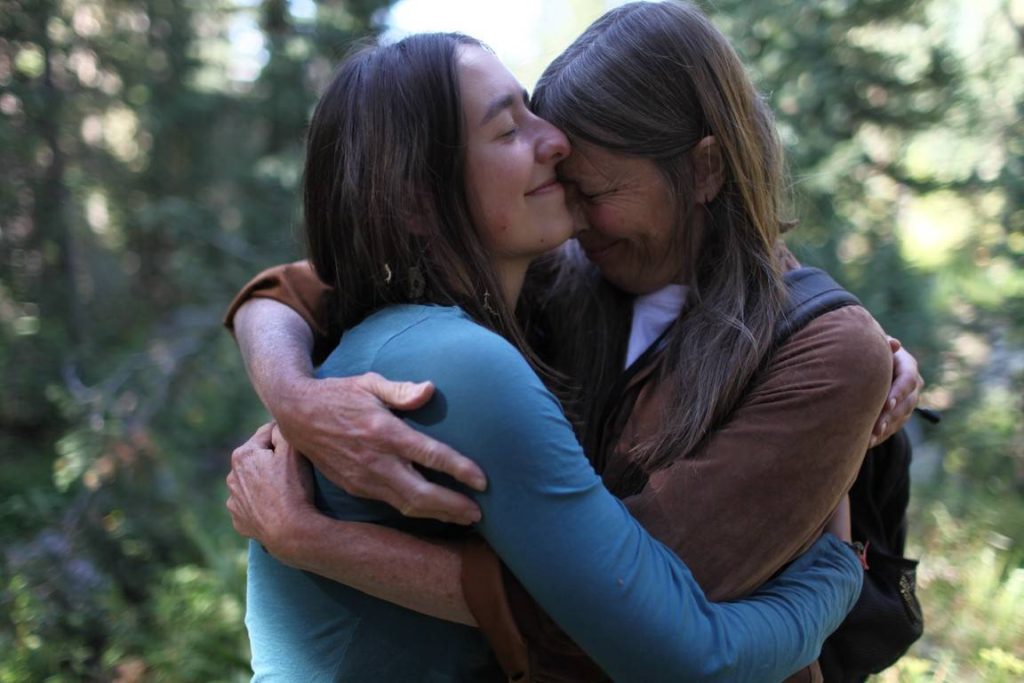
After a Womens Lodge
Spiritual Practices
And what of the awakening of consciousness? Starting to quiet the restless mind, slowly establishing the silent observer within. Patiently building an inner refuge of stillness and peace. Creating a vessel for gathering in finer energies, a light to shine into corners of darkness and gray and shadow. Learning to concentrate and to reflect. Encountering the need to overcome human impediments such as arrogance and greed and to establish humility, generosity of spirit and loving-kindness. Emptying and filling, always emptying and filling the cup. Intention formed and strengthened in conscious work, right actions and practices perfected over and over again.
While they built buildings and foundational traditions and practices, Lama’s early residents invited spiritual teachers and produced books about the teachings they received: Be Here Now based on Ram Dass’ spiritual transformation from encountering his teacher Neem Karoli Baba; The Yellow Book of Hari Dass Baba’s chalkboard teachings; In the Garden conveying the spirit and practices of Murshid “Sufi Sam” Lewis who taught at and was later buried at Lama. Then these pioneers invited others to join them to also benefit from the many traditions and practices brought to Lama. This education and outreach to a larger community continues every summer.
Lama’s spiritual practices vary at any given time depending on what people bring or what form grace assumes. Certain core practices are constantly re-discovered and renewed. New practices emerge, diverse and multi-faceted, yet seeking the holy, seeking unity and common ground.
Everyone is invited to taste, savor, embrace the feast:
Morning sitting meditation for the entire community. Friday night Jewish Shabbat service. Sufi dhikr. Periods of community silence. Native American prayers at the tipi circle. Grace sung before meals. Dances of Universal Peace in the Dome. Silent vipassana intensives. Hindu kirtan and all-night Akhanda Nama. Christian centering prayer. Ramadan month of Islamic fasting and prayer. Women’s lodge. Zen tea ceremony.
After the out-breath of summer comes the precious, more intimate and quiet time of winter. Then the close-knit body of winter residents learns community skills such as mediation and attend intensive courses in spiritual methods and knowledge. All are encouraged to take private retreats in snow-bound hermitages. First-year and longer-term residents may study an established path with other residents or investigate the rich collection of books and media in the Lama library. Some residents are supported with time and funds to visit local and distant teachers and schools during the winter months.
Lama provides the spiritual seeker with a supporting ground, respectful companionship, and the richness of global interfaith pluralism. Residents share a common dedication to serving the community and its guests in conscious work and service. Heart Club meets to explore emotional and psychological states that arise. No permanent resident teacher, no compulsion, no obligatory creed or method… just the acknowledgement that many paths exist and that the individual is part of a complex tapestry made up of unique interwoven fibers. Individuals may explore several practices, and perhaps find a single distinct path clearly calling them. One path dedicated and taken, a life re-shaped in a direction both broader and more focused, drawing from ancient sources which are like wells dug deep to living water.
Lama Mountain is a place of breath-taking natural beauty, a mountainside seemingly designed to be a refuge, monastery, or shrine, making those who come feel at once insignificant and exalted. Here “the world” feels hundreds of miles away. Quiet, solitude, peace. Here one can experience profound dependence on, and gratitude to, the natural world. The emphatic call of the great religions and traditions for stewardship of the earth seems as natural as breathing here. Plants, animals, earth, water, air, sun’s energy…all call out to the awakening spirit to be respected, cared for, nourished, and honored in the name of the One.
Some residents arrive with spiritual paths fixed and strong. Others come with paths rejected to rediscover. Many come searching for a path still unknown, unanticipated. All bring hearts broken in various ways, experiences of emptiness and incapacity that impel to questioning, seeking, persevering. Nearly all depart transformed, with deep bonds of friendship, joy and respect formed through shared work, worship, and service.
A bell rings. Stop.
Observe thought.
Enter breath.
Silence. Remember.
The wind sighs in the trees.
Silence.
